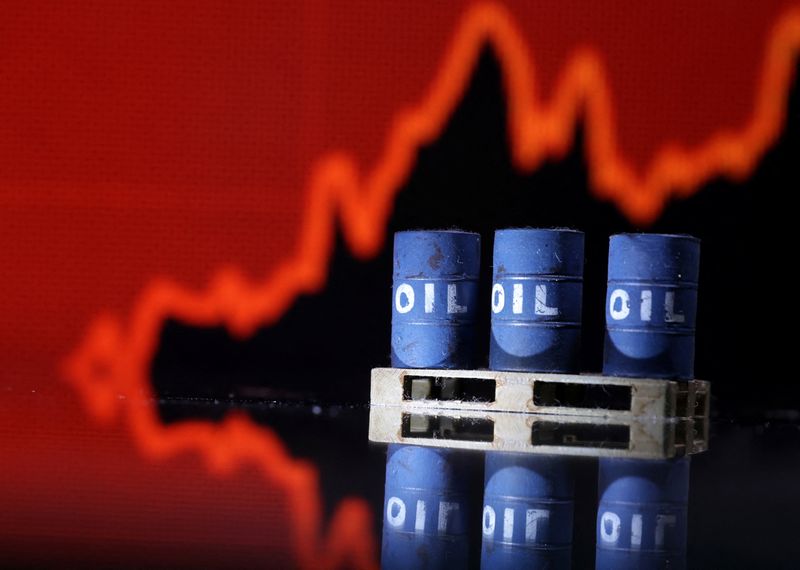
By Georgina McCartney
HOUSTON (Reuters) -Oil prices rose more than 1% on Thursday as cold weather gripped parts of the U.S. and Europe, boosting winter fuel demand.
Brent crude futures were up 98 cents, or 1.29%, at $77.14 a barrel by 1:10 p.m. EST. U.S. West Texas Intermediate crude futures gained 84 cents, or 1.15%, to $74.16. On Wednesday, both benchmarks had fallen more than 1%.
The rise is “definitely winter fuel demand kicking in here in the U.S. for sure,” said John Kilduff, partner at Again Capital in New York.
Parts of east Texas up to the north of Kentucky were under a winter storm warning, according to the National Weather Service, covering large swathes of Arkansas and Tennessee.
“Right now it appears that the ice will stay north of refinery row along the U.S. Gulf Coast, but power outages will be a concern as heavy rain and wind comes along for the ride,” TACenergy’s trading desk wrote on Thursday.
“Yesterday we saw strong refinery run rates, refiners in the U.S. are clearly cranking out fuels of all stripes and that is also underpinning the crude oil market today,” Again Capital’s Kilduff added.
Ultra-low sulfur diesel futures were trading at around $2.39 a gallon, their highest since Oct. 8, according to data from LSEG.
Refinery crude runs rose by 45,000 barrels per day (bpd) in the week to Jan. 3 according to the Energy Information Administration on Wednesday, while utilization rates climbed by 0.6 percentage points to 93.3%. [EIA/S]
Refiners along the U.S. Gulf Coast raised their crude oil net inputs to the highest levels since December 2018, the EIA said.
Meanwhile, JPMorgan analysts expect oil demand for January to expand by 1.4 million barrels per day (bpd) year on year to 101.4 million bpd, primarily driven by the increased use of heating fuels in the Northern Hemisphere.
“Global oil demand is expected to remain strong throughout January, fuelled by colder than normal winter conditions that are boosting heating fuel consumption, as well as an earlier onset of travel activities in China for the Lunar New Year holidays,” the analysts said.
The market structure in Brent futures is also indicating that traders are becoming more concerned about supply tightening at the same time demand is increasing.
The premium of the front-month Brent contract over the six-month contract reached its widest since August on Wednesday. A widening of this backwardation, when futures for prompt delivery are higher than for later delivery, typically indicates that supply is declining or demand is increasing.

